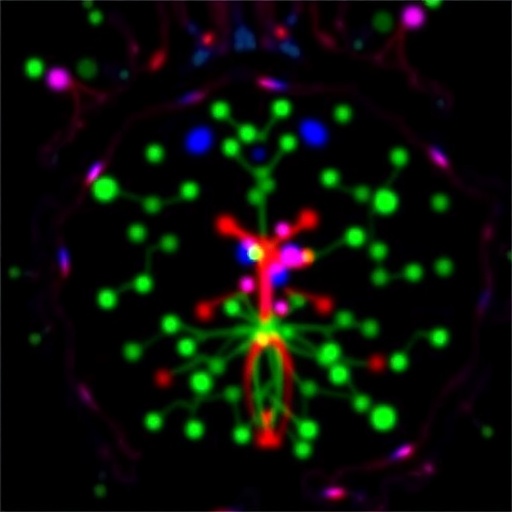In a groundbreaking study published in the Journal of Perinatology, researchers have unveiled intricate connections between the nucleated red blood cell (NRBC) count at birth, red blood cell (RBC) transfusion volumes, and the development of retinopathy of prematurity (ROP). This nuanced exploration marks the first time both NRBC counts and RBC transfusion data were examined concurrently in the same neonatal cohort with respect to their impact on ROP risk, an insight that promises to reshape clinical approaches to neonatal care, particularly in preterm infants at risk for this blinding condition.
Retinopathy of prematurity is a vasoproliferative disorder primarily affecting the immature retinal vasculature in preterm infants. It is a leading cause of childhood blindness worldwide, driven by a complex interplay of oxygen regulation, vascular growth factors, and systemic physiological stressors. While antecedent research has separately implicated elevated NRBC counts and RBC transfusions as potential risk factors for ROP development, integrating these parameters represents a significant advancement in understanding ROP pathogenesis.
NRBCs are immature erythroid precursors that typically diminish to negligible levels by term gestation but may surge in response to intrauterine hypoxia or stress. Elevated NRBC counts at birth serve as biomarkers of fetal hypoxia and stress, conditions thought to contribute to microvascular dysregulation in the retina. The current study provides compelling evidence linking higher NRBC counts at birth to increased susceptibility to ROP, reinforcing the hypothesis that prenatal hypoxic exposure primes the retina for aberrant neovascularization postnatally.
Equally consequential is the study’s illumination of the role of RBC transfusions. Preterm neonates frequently receive RBC transfusions to counteract anemia of prematurity, but the implications of transfusion volume for ROP risk have been ambiguous. The investigation reveals a dose-dependent relationship whereby larger volumes of RBC transfusions correlate with heightened ROP incidence. This suggests that beyond the intrinsic anemia, exogenous manipulation of circulating red cells impacts retinal angiogenesis, possibly through altered oxygen delivery dynamics or inflammatory responses.
The novelty of this research lies in its simultaneous evaluation of NRBC counts and RBC transfusion volumes within the same cohort, enabling a more granular analysis of their combined effects on ROP risk. The study employed robust statistical models to dissect the independent and interactive contributions of these hematologic factors, accounting for confounders such as gestational age, birth weight, and oxygen supplementation status. This methodological rigor enhances the reliability of the conclusions and sets a benchmark for future investigations.
From a mechanistic standpoint, the findings spotlight the role of perinatal hypoxia as a critical initiator of pathological retinal changes, with NRBC counts serving as a proxy for the degree of hypoxic insult. The subsequent administration of RBC transfusions, although life-saving, may exacerbate oxidative stress or disrupt delicate angiogenic signaling pathways, thereby compounding the risk initiated in utero. This dual-hit paradigm offers a plausible explanatory model integrating prenatal and postnatal factors.
Clinically, these insights carry profound implications. Neonatologists and ophthalmologists must consider the prognostic value of NRBC counts at birth when stratifying ROP risk and tailoring surveillance protocols. Furthermore, optimization of transfusion practices—balancing the necessity to correct anemia with minimizing excess transfusion volumes—emerges as a critical component of ROP prevention. The study advocates for the development of nuanced transfusion guidelines informed by hematologic biomarkers, aligning therapeutic interventions with individualized risk profiles.
This research also calls attention to the broader context of neonatal hematologic management. The interplay between erythropoiesis, oxygen delivery, and vascular development is evidently complex and tightly regulated. Disruptions in this equilibrium, whether from fetal hypoxia or medical interventions, can precipitate cascading effects on organ systems beyond the retina. An integrated approach considering systemic hematologic health may therefore improve outcomes across multiple domains.
Future research building on these findings could explore the molecular mediators that link NRBC elevation and transfusion exposure to retinal vascular pathology. Potential targets include hypoxia-inducible factors, vascular endothelial growth factor signaling, and inflammatory cytokine cascades. Elucidating these pathways could foster the development of targeted therapeutics aimed at mitigating ROP without compromising essential hematologic support.
There is also scope for investigating the timing and thresholds of transfusion interventions in relation to NRBC counts and other biomarkers. Precision medicine approaches leveraging real-time hematologic monitoring could inform safer transfusion strategies, ultimately reducing the incidence and severity of ROP. Additionally, longitudinal studies assessing how early hematologic parameters relate to long-term visual and neurodevelopmental outcomes would enrich our understanding of the broader impact.
The novel utilization of NRBC counts as a predictive marker emphasizes the potential utility of routine blood panels taken at birth to guide neonatal intensive care management. Incorporating NRBC quantification into standard assessments could pave the way for early identification of infants at risk and proactive clinical decision-making. This could revolutionize current neonatal protocols, ushering in an era where hematologic biomarkers guide preventive ophthalmic interventions.
Overall, this pioneering study by Zeiler et al. not only advances the scientific understanding of ROP pathophysiology but also provides actionable insights with real-world clinical relevance. It underscores the importance of a multifactorial perspective, drawing connections between prenatal stress markers and postnatal therapeutic exposures to better predict and prevent debilitating outcomes. The implications for improving neonatal care are profound, promising to reduce the burden of blindness associated with prematurity.
As neonatal intensive care continues to evolve, harmonizing efforts between hematologists, neonatologists, and ophthalmologists will be vital. Collaborative protocols integrating NRBC assessments and judicious transfusion management could become standard practice, informed by the rigorous evidence emerging from this study. Such interdisciplinary strategies embody the future of personalized neonatal medicine, aimed at safeguarding visionary potential from the very first moments of life.
This research also exemplifies the value of comprehensive cohorts and multifaceted analytic frameworks in uncovering subtle yet clinically critical interactions. The sophisticated approach taken here illustrates how revisiting established risk factors in conjunction can yield novel insights with direct translational implications. As a result, it sets a new paradigm for neonatal research methodology, combining biomarker evaluation with therapeutic exposure analysis.
In conclusion, the simultaneous examination of the nucleated red blood cell count at birth and the volume of red cell transfusions represents a leap forward in understanding and mitigating retinopathy of prematurity risk. The study’s revelations not only spotlight actionable biomarkers and modifiable risk factors but also inspire a reevaluation of neonatal transfusion practices. These findings have the potential to catalyze meaningful reductions in ROP-related blindness worldwide, transforming neonatal outcomes through refined, biomarker-driven care strategies.
Subject of Research: The impact of nucleated red blood cell count at birth and red blood cell transfusion volume on the risk of developing retinopathy of prematurity (ROP) in preterm infants.
Article Title: The nucleated red blood cell count at birth, the volume of red cell transfusions received, and the risk of developing retinopathy of prematurity
Article References:
Zeiler, B., Bahr, T.M., Esplin, S.D. et al. The nucleated red blood cell count at birth, the volume of red cell transfusions received, and the risk of developing retinopathy of prematurity. J Perinatol (2025). https://doi.org/10.1038/s41372-025-02519-3
Image Credits: AI Generated
DOI: 26 November 2025
Tags: childhood blindness causesconnection between NRBC and ROPfetal hypoxia implicationsJournal of Perinatology study findingsneonatal care for preterm infantsneonatal erythropoiesis biomarkersnucleated red blood cell countRBC transfusion volumes in neonatesretinopathy of prematurity risk factorssystemic physiological stressors in neonatesunderstanding ROP pathogenesisvasoproliferative disorders in infants





